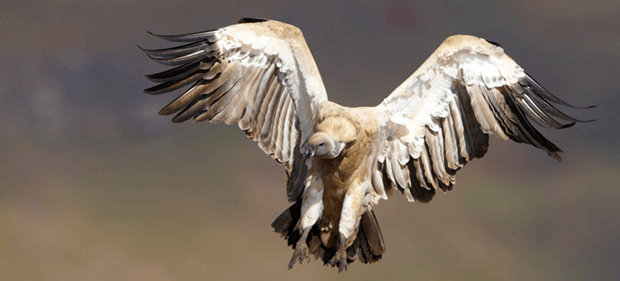Academy News
Collaboration in the Community: Beacon College and ZooTampa  
During the 2018-2019 academic year, Beacon College partnered with ZooTampa and San Diego Zoo Global Academy to offer a dynamic learning experience for undergraduate students. Offered as part of the Anthrozoology degree program, students were able to participate in a semester-long immersive course focused on the examination of zoos and aquariums.
This course was designed to examine the roles of zoos and aquariums in the areas of conservation and education. This included a focus on how these institutions influence the local community and shape conservation efforts, as well as topics examining the biological and behavior needs of the animal populations. In addition, an overview of visitor studies was included.
Throughout the course, students were asked to complete modules offered through the San Diego Zoo Global Academy. Modules and readings were completed ahead of the course day at the zoo. Once per week, students spent the full day at ZooTampa, where they engaged in workshops and behind-the-scenes learning opportunities facilitated by zoo staff and their professor. At the end of their visit on site, students were asked to complete assignments to demonstrate their ability to apply the information in a real-world setting.
The animal care staff were assigned to teach specific modules that best suited their area of expertise. Approximately 12 staff members contributed to the process, including veterinarians, curators, and keepers. The students joined in non-traditional classroom settings, introducing them to real-life examples of collection sustainability and care, herd management, breeding program criteria, as well as conservation goals and objectives of selected species. Since most of the animal care staff have never participated in this type of educational format, we polled them to see how they felt about the experience—and to a person, they enjoyed the opportunity and felt the students benefited.
Students who completed the class all secured an internship at an accredited facility. Additionally, one student was offered full-time employment following graduation. All of the participating students felt the course enhanced their professional skills and knowledge. Additionally, all of the students stated they felt the course better prepared them for entering professional employment in a related facility. The students expressed that the addition of the SDZGA certificates on their resumes increased their confidence in applying for internships and job opportunities.
The collaboration of the two organizations went beyond the offering of the course. Beacon College hosted the International Society for Anthrozoology's annual conference, where Dr. Larry Killmar served as a plenary speaker, presenting his talk "Captive Wildlife, the Challenges and Rewards." The two facilities continue to examine new ways to enhance their partnership and to offer unique experiences benefiting both organizations.
For more information about this article, please contact either Dr. Brian Ogle, bogle@beaconcollege.edu or Dr. Larry Killmar, Larry.Killmar@ZooTampa.org.

Conservation Stories: Saving South African Vultures
Just in time for Vulture Awareness month, we're rolling out a new San Diego Zoo Global Academy module: Conservation Stories: Saving South African Vultures. The module tells the story of how San Diego Zoo Safari Park bird keepers contribute to vulture conservation fieldwork in South Africa, how the program started, and what lies ahead.
Keepers, interpreters, guides, and docents can discover this story and learn more about vulture conservation in this module, which is the first module in our new Conservation Stories category. Learners' progress and passing the course is tracked by course completion. Interactivity sprinkled throughout the modules engages participants in the learning process. The module takes about 30 minutes to complete, although learners progress at their own pace and may repeat the entire course or sections of the course as many times as they like.
Saving South African Vultures offers insights and takeaways for veteran animal keepers and interpreters alike. Whether you've worked with vultures for years or you're a brand-new interpreter or docent, the modules will equip you with a better understanding of conservation efforts for these amazing animals.
The module can easily be integrated into your current training program. Providing online modules that team members can complete anywhere and at any time overcomes one of the major challenges of training: getting all participants together in one place at one time. At the San Diego Zoo and Safari Park, participants complete online modules on their own before attending group training programs. They are able to master key vocabulary and concepts, giving them a solid foundation that allows them—and their trainers—to make the most of in-class and on-site training.
Another benefit of the new Saving South African Vultures module is that it is designed to run on your desktop computer, laptop, tablet, or even your phone—anywhere you have an internet connection! Saving South African Vultures is the first module in the new Conservation Stories category. We look forward to adding more of your conservation stories!
For more information about this article, please contact Donna Parham, SDZG, at dparham@sandiegozoo.org.
 See Us at the AZA Annual Conference in New Orleans See Us at the AZA Annual Conference in New Orleans
One of the highlights of each year is to talk training with everyone at the Association of Zoos and Aquariums (AZA) Annual Conference, and this year's event is September 7–11 in New Orleans. See you there—we will be at Booth 544.
Now You Can Follow the San Diego Zoo Global Academy on LinkedIn
San Diego Zoo Global Academy has a new site on LinkedIn. We'll be featuring new posts frequently, highlighting SDZG Academy courses like the new Safe Capture training. For regular updates, check it out and follow us on LinkedIn. Tell your friends in the animal care profession. Help us build an ever-expanding community of connections in the wildlife world.
For more information about our LinkedIn site, please contact Becky Lynn at blynn@sandiegozoo.org.
 San Diego Zoo Global Academy Puts the North Carolina Museum of Natural Sciences in the Spotlight! San Diego Zoo Global Academy Puts the North Carolina Museum of Natural Sciences in the Spotlight!
The North Carolina Museum of Natural Sciences is part of the Academy's collaborative learning environment!
Administrator's Users Group Webinar
 Please join us for the Administrator's Users Group Webinar, hosted by Academy partner CypherWorx. The next webinar is Wednesday, September 18, at 11 a.m. PDT. Please join us for the Administrator's Users Group Webinar, hosted by Academy partner CypherWorx. The next webinar is Wednesday, September 18, at 11 a.m. PDT.
Register for this webinar here.
After registering, you will receive a confirmation email containing information about joining the webinar.
|